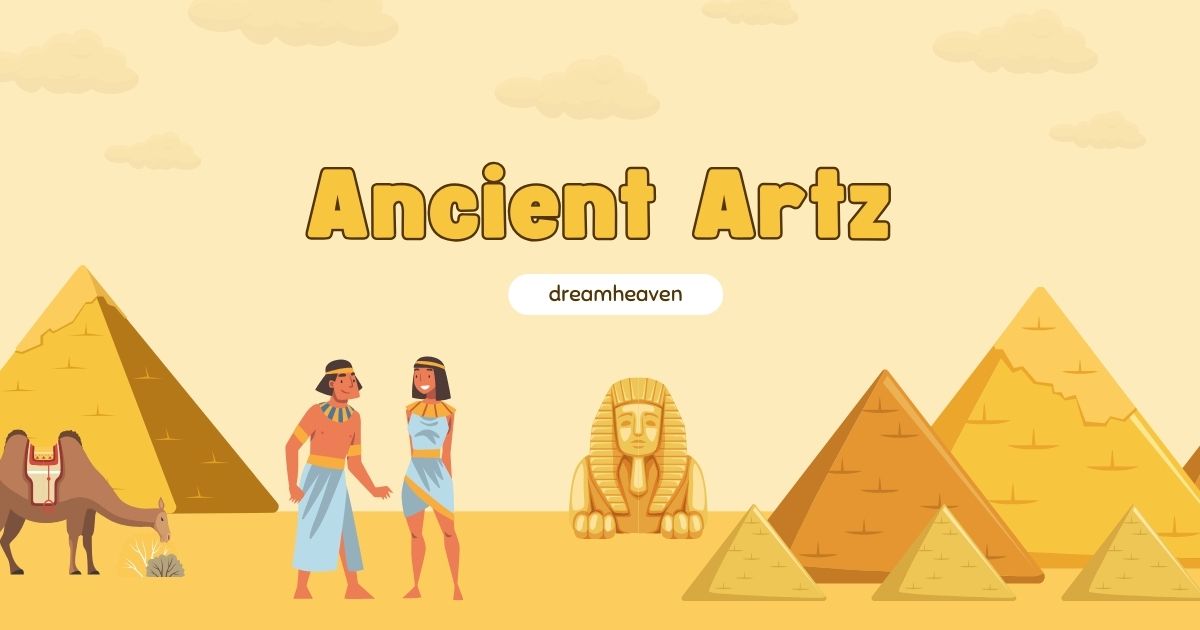Ancient Artz reflects the creative expressions of early civilizations, offering insights into their culture, beliefs, and way of life. From cave paintings to grand architectural marvels, Ancient Artz is a testament to humanity’s enduring quest to communicate and immortalize its existence.
The Origins of Ancient Art
Art traces back to prehistoric times, where humans used rudimentary tools to create imagery on cave walls. These early artworks, such as the famous Lascaux cave paintings in France, predominantly depicted animals, hunting scenes, and symbolic patterns, revealing the daily lives and spiritual beliefs of our ancestors.
The Significance of Symbolism
Ancient Artz is rich in symbolism, often serving religious or ceremonial purposes. Symbols like the ankh in Egyptian art, the spiral in Celtic designs, and the lotus in Indian culture carried profound meanings, connecting the physical and spiritual realms.
Stone Age Masterpieces
The Stone Age gave rise to notable art forms, including petroglyphs (rock carvings) and megalithic structures. Stonehenge in England and Gobekli Tepe in Turkey are examples of ancient engineering and artistic ingenuity, showcasing early humans’ understanding of geometry and design.
Egyptian Art and Its Timeless Influence
Ancient Egyptian art remains one of the most recognized and celebrated art forms in history. Characterized by its detailed carvings, monumental pyramids, and vivid frescoes, Egyptian art often depicted gods, pharaohs, and scenes of the afterlife, reflecting their profound spiritual beliefs and societal structure.
Mesopotamian Art and Innovation
In Mesopotamia, the cradle of civilization, art evolved alongside the rise of cities and writing systems. The ziggurats, intricate cylinder seals, and the famous Stele of Hammurabi illustrate the artistic and legal sophistication of this ancient culture.
Greek Art and the Birth of Aesthetics
The ancient Greeks revolutionized art by focusing on human form and expression. From the lifelike statues of gods and athletes to the Parthenon’s architectural brilliance, Greek art emphasized balance, proportion, and harmony, influencing Western art for centuries.
The Marvel of Roman Art
Roman art combined functionality and grandeur, evident in their realistic sculptures, mosaics, and engineering feats like the Colosseum and aqueducts. Romans adopted and adapted Greek styles, enriching their art with storytelling and practical applications.
Asian Contributions to Ancient Art
In Asia, art flourished with unique styles and mediums. Chinese art focused on calligraphy, ink paintings, and jade carvings, while Indian art excelled in temple architecture, sculptures, and Buddhist murals like those in the Ajanta Caves.
The Mystique of Pre-Columbian Art
Pre-Columbian civilizations in the Americas, such as the Maya, Aztecs, and Inca, left a legacy of art through pyramids, pottery, and intricate goldwork. Their art was deeply intertwined with their rituals and cosmology.
African Art: A Fusion of Culture and Spirituality
Ancient African art, seen in Nok sculptures and Benin bronzes, is a profound blend of artistry and cultural identity. These works often used natural materials and depicted figures with spiritual significance.
The Role of Nature in Ancient Art
Nature was a central theme in ancient art, influencing designs and materials. From cave art depicting wildlife to the incorporation of natural elements in sculptures, ancient artists often mirrored their environment.
Techniques and Tools of Ancient Artists
Ancient artists utilized simple yet effective tools like chisels, pigments from natural minerals, and handmade brushes. These rudimentary tools produced masterpieces that have withstood the test of time.
Preservation of Ancient Art
Preserving Ancient Artz is vital for understanding history. Efforts to protect sites like the Great Wall of China, the Terracotta Army, and the ruins of Machu Picchu ensure that future generations can appreciate the ingenuity of ancient civilizations.
Lessons from Ancient Art
Ancient Artz teaches us about resilience, creativity, and the universality of human expression. It bridges the gap between the past and present, showing how art has always been a medium for storytelling and emotional connection.
Conclusion
Ancient Artz is a window into the soul of early humanity, reflecting their struggles, triumphs, and beliefs. Whether through monumental architecture or delicate carvings, these timeless works inspire awe and curiosity, reminding us of the depth of our shared history.
FAQs
1. What is the oldest known form of art?
Cave paintings, such as those in Chauvet Cave in France, dating back over 30,000 years, are among the oldest known art forms.
2. Why was art important in ancient civilizations?
Art was crucial for communication, religious practices, and recording events, as well as expressing cultural identity.
3. How did ancient artists create their tools?
Ancient artists used natural materials like stones, animal bones, and plant pigments to craft tools for carving and painting.
4. Which ancient civilization is most known for its architecture?
The Egyptians, Greeks, and Romans are renowned for their architectural achievements, such as pyramids, temples, and aqueducts.
5. How is ancient art preserved today?
Conservation methods include controlled environments, protective coverings, and digital documentation to prevent damage from weather and human interference.

